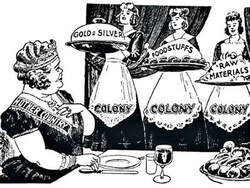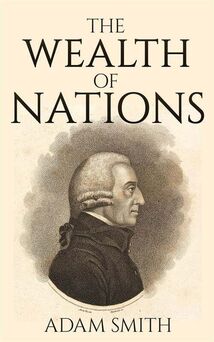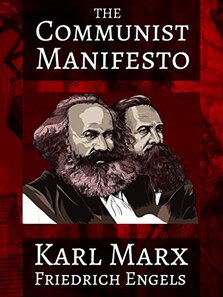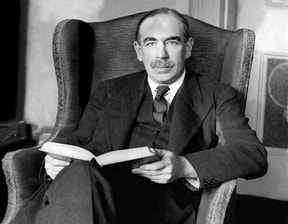ECONOMICS STUDY CENTER, UNIVERSITY OF DHAKA
|
Ashab Hossain Khondokar, Tamanna Akter Tithi Cover Design: Farha Tasneem Introduction: Economics is the drop of water that contains the entire ocean of knowledge for development. As a result, it constantly changes forms and expands its dimensions, much like a wave. Consequently, we discover a plethora of ideas and opinions about this enchanted subject. Now, let us examine the magic of economics through the process of upholding the different layers of thoughts while holding the hand of time and travelling down the route of history. Schools of economic thought describe the variety of approaches in the history of economic thought noteworthy enough to be described as a school of thought. While economists do not always fit into particular schools, specially in modern times, classifying economists is common. Economic thought may be roughly divided into three phases: premodern, early modern and modern. Pre modern thoughts: The earliest discussions date back to ancient times, such as Chanakya's Arthashastra or Xenophon's Oeconomicus, religious-based ideas of Jewish thought, the Scholastics, and medieval Islamic scholars' thought were milestones for flourishing the spark of economics. During those early times, and until the industrial revolution, economics was not a separate discipline but part of philosophy. Early theorists' views were influenced by religious tenets as well as a concern for morality and ethics. Early economists were concerned about a number of challenges that they shared, and the answers to which form the foundation of the construction of well-functioning societies now, just as they were in the past. These include how to make markets, taxation policies, and other monetary instruments transparent and free of corruption; when is profit (and how much) based on the labors of others permissible (and when does it become unacceptable usury), such as in the case of merchants; and other practices that would otherwise destroy the well-being of ordinary law-abiding people on which strong and unified states were built. While their ideas weren't always complete, and some of them resulted in lengthy disputes rather than solutions, their attempts shared a lot of similarities. It's also worth mentioning that early economic thought, which was closely linked with philosophical and/or religious ideas, tended to prioritize the welfare of the ordinary man, the worker, rather than finding ways to benefit a few wealthy individuals, either for themselves or for others. Systematic economic theory has been developed mainly since the beginning of what is termed the modern era.  Mercantilism: Mercantilism is an economic system that was used by European countries from the 16th to the 18th century. It advocated for government regulation of a country's economy in order to strengthen the state's position at the expense of competitor national powers. It was also based on the principle that the world's wealth was static and that a nation's wealth and power were best served by increasing exports. Consequently, many European nations attempted to accumulate the largest possible share of the wealth by maximizing their exports and by limiting their imports by tariffs. It is important to note that mercantilism was the economic counterpart of political absolutism. It replaced the feudal economic system in western Europe. At the time, England was the epicenter of the British empire, but it had relatively fewer natural resources. To grow its wealth, England introduced fiscal policies that discouraged colonists from buying foreign goods and created incentives to buy only British goods. An example of such policies is, "The Sugar Act" of 1764 that raised duties on foreign refined sugar and molasses imported by the colonies, giving the British sugar producers a monopoly in the British market.  Classical Economic Thought: In 1776, Adam Smith, a Scottish philosopher, published "An Inquiry into the Nature and Wealth of Nations," which gave economics good ground and water, allowing it to grow into a sapling. His book revolutionized economic thought. His major transformational thought was that the wealth of a nation is not based on the accumulation of gold and silver but on the value of the goods and services it produces; which we now call gross domestic product or GDP. This thought holds true till date. The country that has the highest GDP today i.e. USA (19.485 trillion USD) is not the country with the highest gold reserve, but is the country that can produce the most valued goods and services. One of Smith's key thoughts was that worker’s productivity is the key to increasing wealth, which could be increased by division and specialization of labor. He came up with the labor theory of value; which states that the cost of production equals the value of the product produced. The concept of the invisible hand was also coined by Smith, which he used to explain the self regulating nature of a market economy which can operate without government intervention. Consumers will always be looking to maximize utility while producers will always try to maximize their profits. Smith argued that free trade is the key to the prosperity of nations. Neo-classical Thought: Neoclassical economics is an economic theory that emerged in the 1900s that differs from classical economics in the case of setting the value of a product. Classical economists believed that the value of a good should be derived from the cost of production. But neoclassical economists argued that the value of a good should be set based on the utility that is derived by the consumers. Neoclassical economics explains how prices for goods and services are set, how outputs (the amount of products and services produced) are determined, and how income is dispersed among those who participate in market transactions using supply and demand principles. The three founding fathers of neo classical economics were William Stanley Jevons, Carl Menger and Leon Walras. Photo: From left, William Stanley Jevons, Carl Menger and Leon Walrus Source: Wikipedia  Marxist Thought: Karl Marx along with Frederich Engels wrote the ‘Communist Manifesto’ in 1848 that challenged the then classical economists and their capitalistic free market approach. The basic idea of communism is that all means of production are equally owned by all the members of a state. The intended result is to eliminate the capitalism inspired class system where one class does all the work and the other gets all the money. In particular, Marxism is focused on the exploitation of the worker. It is based on the idea that any profit that is generated by the worker but instead goes to the business owner is a form of inequality and should be abolished. In recent history, several countries like the USSR, China, Vietnam, Cuba have attempted to institute their own versions of communism. Attempts to achieve this philosophy have led to lower standards of living, government corruption and in the case of the USSR, total collapse and failure. The strongest critic of communism is that it removes the incentive for people to work harder than they absolutely have to. It also leads to resentment among those who work less hard yet receive the same. Communism is described to be great in theory while disastrous in practice. Neo-Marxist Thought: There were some social and political issues that Marxist theory could not address sufficiently. Neo-Marxism was developed aiming to address and solve those problems. This iteration of thinking tended towards peaceful ideological dissemination, rather than the revolutionary, and often violent, methods of the past. In terms of economics, neo-Marxist leaders went past the period of public outrage over class struggle and worked to find workable solutions. Neo-Marxists generally criticize capitalism for being monopolistic and oligarchical rather than competitive. Whereas Marxism focuses on a stateless society, Neo-Marxists emphasize on the imperialistic and militaristic government to prevent the concentration of surplus capital in the hands of business elites— China can be more or less considered as an example. Keynesian Thought: The Keynesian school of economic thought was inspired by the economic crisis of the 1930s. A crisis that the classicists had failed to predict and was unthinkable in the model of their world. This notion is frequently referred to as the economic revolution. Keynes considered regulation by the market to be imperfect and therefore inadequate. He challenged the existence of automatic mechanisms regulating economic activity. He also stressed on the need for state intervention in order to create equilibrium. He emphasized on the fact that the government needs to impose fiscal and monetary policies to increase output and decrease unemployment during recessions. Photo: John Maynard Keynes Source: John Maynard Keynes: Great Economist, Terrible Currency Trader - The New York Times Neo-Keynesian Thought: Neo-Keynesian economics was developed during the post-war period derived from the writings of John Maynard Keynes by a group of economists, notably John Hicks, Franco Modigliani and Paul A. Samuelson. They attempted to interpret and formulate Keynes’ writings and synthesize it with the neoclassical model of economics. Their work has become known as the neo-classical synthesis. These ideas dominated mainstream economics in the post war period and formed the mainstream macroeconomic thought of the 1950s through 1970s. Other notable advocates of neo Keynesianism are Abba Lerner, James Tobin, Alvin Hansen, Trevor Swan and John Gurley. Other schools of Economic Thought: There are some other schools of economic thought that oppose the mainstream schools and are called Heterodoxic Schools of Economic Thought. Some of them are Utopians, Socialists, Fabian Socialists, Feminist Economics, The German Historical School, The English Historical School, The French Historical school, The American Institutionalist School etc. The most obvious evidence of existence is change. As a result, the discipline's thoughts have been changed, are being changed, and will be modified in order to scientifically investigate the surrounding. It's very fascinating how most of them are still around in some form or another. Photo: Emblem of The German Historical School (Left) Glass painting made for the HQ of Fabian Society (Right) Source: German Historical School Fabian Society: Roots, theory and practice of socialist think tank | Daily Sabah
3 Comments
Rohit Kumar
6/30/2023 10:25:06 pm
Nice 👍
Reply
Kenny
8/11/2023 12:57:10 am
It is good to learn and explore
Reply
Anu
3/16/2024 11:08:12 pm
Nice introduction!
Reply
Leave a Reply. |
Send your articles to: |









